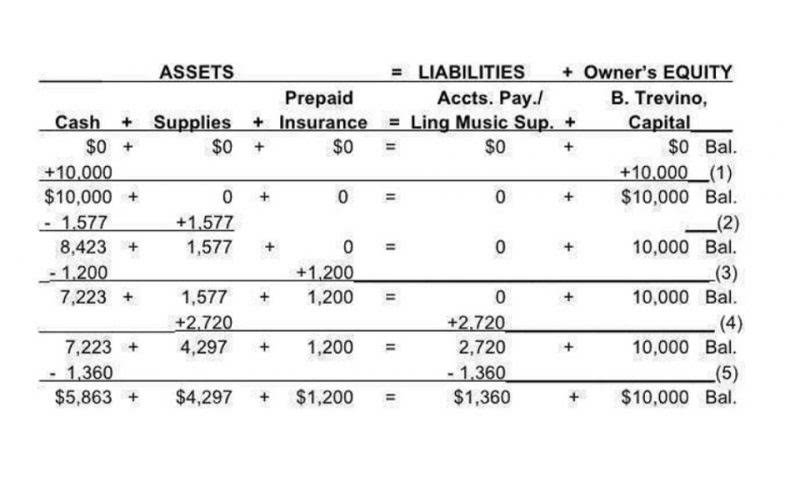This allocation is spread over the rental period to which the prepayment relates, ensuring that each reporting period reflects the true cost of operations. The consistent treatment of normal balance of prepaid rent prepaid rent in the income statement provides stakeholders with a realistic view of the company’s operating expenses and profitability. It also aids in the comparison of financial performance across periods, as it eliminates the distortions that could arise from irregular rent payments. As the prepaid expense is used or consumed over time, it needs to be adjusted to reflect the actual expense incurred. This involves a debit to an expense account (an income statement account) and a credit to a prepaid expense account (a balance sheet account). This reduces the prepaid expense balance but increases the expense balance.

Rent paid in advance accounting equation
The process of accounting for prepaid rent involves specific journal entries that capture the initial transaction and the subsequent monthly recognition of rent expense. These entries are fundamental to maintaining the integrity of financial records and ensuring that the financial statements accurately reflect the company’s economic activities. Accounting for prepaid expenses might seem tricky, but it follows a logical pattern that helps tell an accurate story of a company’s finances. When businesses make advance payments, they first record them as assets—this acknowledges they’ve purchased something of future value.

Account

In the accounting equation, we can see that the transaction of the rent paid in advance increases one asset while decreasing another asset at the same time. Likewise, the transaction of rent paid in advance only occurs on the assets of the accounting equation. Likewise, after this journal entry, the balance of the rent paid in advance that the company has recorded in the prior period will be will reduced by the rental fee for the period. However, similar to prepaid insurance, the prepaid rent will expire through the passage of time. So, the company needs to recognize the expiration cost as a rent expense at the end of the period.
Why Are Prepaid Expenses an Asset?
Continuing with the previous example, if the $12,000 covers 12 months of rent, the monthly amortization would be $1,000. The corresponding journal entry each month would be a debit to rent expense for $1,000 and a credit to prepaid rent for the same amount. This entry moves the expense from the balance sheet to the income statement, reflecting the consumption of the rental benefit over time. The monthly amortization ensures that the expense recognition aligns with the period in which the space is utilized, maintaining adherence to the accrual basis of accounting. You can make an advance payment for goods or services such as rent on leased office space or insurance coverage. Prepaid rent is, therefore, a type of prepaid expense; the payment of rent made before the rental period to which it is related.
- When you have accrued rent, you decrease the ROU because the expense has been recognized, but the liability is unchanged.
- Both deferred rent and prepaid rent have implications for financial reporting.
- This placement among assets is crucial as it informs investors and creditors about the company’s short-term financial commitments and its allocation of resources.
- However, once the prepaid rent has been used up, the expense is recorded on the income statement as rent expense.
- Each month, as it occupies the office space, it’ll convert $2,000 of that prepaid asset into a rent expense.
Prepaid rent journal entry
In essence, there is no such account named “prepaid rent” on the balance sheet under the rules of ASC 842. Instead, such an asset is recognized as part of the Right-of-use (ROU) Asset balance. If it is non-refundable, then it’s technically prepaid rent, and this guide applies to the situation. If it is refundable at the end of QuickBooks the lease, then it’s not prepaid rent and should be regarded simply as a balance sheet item. Further details on the treatment of pre paid rent can be found in our prepaid expenses tutorial.

Understanding how these transactions work is crucial for anyone interested in business operations or investing. The difference between the actual cash rent payments and the straight-line rent expense is recorded as deferred rent on the balance sheet. However, when the services are taken during the rental period, the prepaid rent is credited, and the rent expense will be debited.
Rent Accounting for ASC 842: Prepaid Rent, Journal Entries, and More

Instead, it focuses on the actual cash transactions, https://www.bookstime.com/ offering a complementary perspective to the accrual-based figures presented in the other financial statements. This journal entry is called an adjusting journal entry, and it shows the recognition of the expense in the income statement. The adjusting journal entry is done each month, and at the end of the year, when the prepaid expense has no future economic benefits, the prepaid expense balance would be zero. As a current asset, prepaid rent usually provides value to a business over several accounting periods (usually six months or a year). Assume you pay rent to a landlord of office space for the next 6 months.
- Prepaid rent refers to lease payments made in advance for a future period.
- Unlike the balance sheet and income statement, the cash flow statement does not include the subsequent monthly amortization of the prepaid rent.
- Investors and auditors look at how companies handle their prepaid expenses to gauge financial health and compliance with accounting standards.
- Prepaid rent is the amount the company pays in advance to use the rental facility (e.g. office or equipemnt, etc.).
- Under ASC 842, prepaid rent is no longer classified as a current asset but is instead included as part of the right-of-use (ROU) asset for operating and finance leases.
Therefore, businesses must record the rent paid in advance on the company’s balance sheet. In accounting, the rent paid in advance is an asset, not an expense, as the amount paid represents the advance payment for the future use of the rental property such as office space, etc. Likewise, the company needs to record the rent paid in advance as the prepaid rent (asset) in the journal entry. A business will record prepaid rent as an asset on the balance sheet because it represents a future benefit that is due to the business. Then, the prepaid rent value would decrease as the benefits of the advanced rent payment are realized over time, and the amount used up would be expensed to the income statement. Hence, prepaid rent is first recorded as a current asset on the balance sheet and as it is used up, it is recorded as an expense on the income statement.